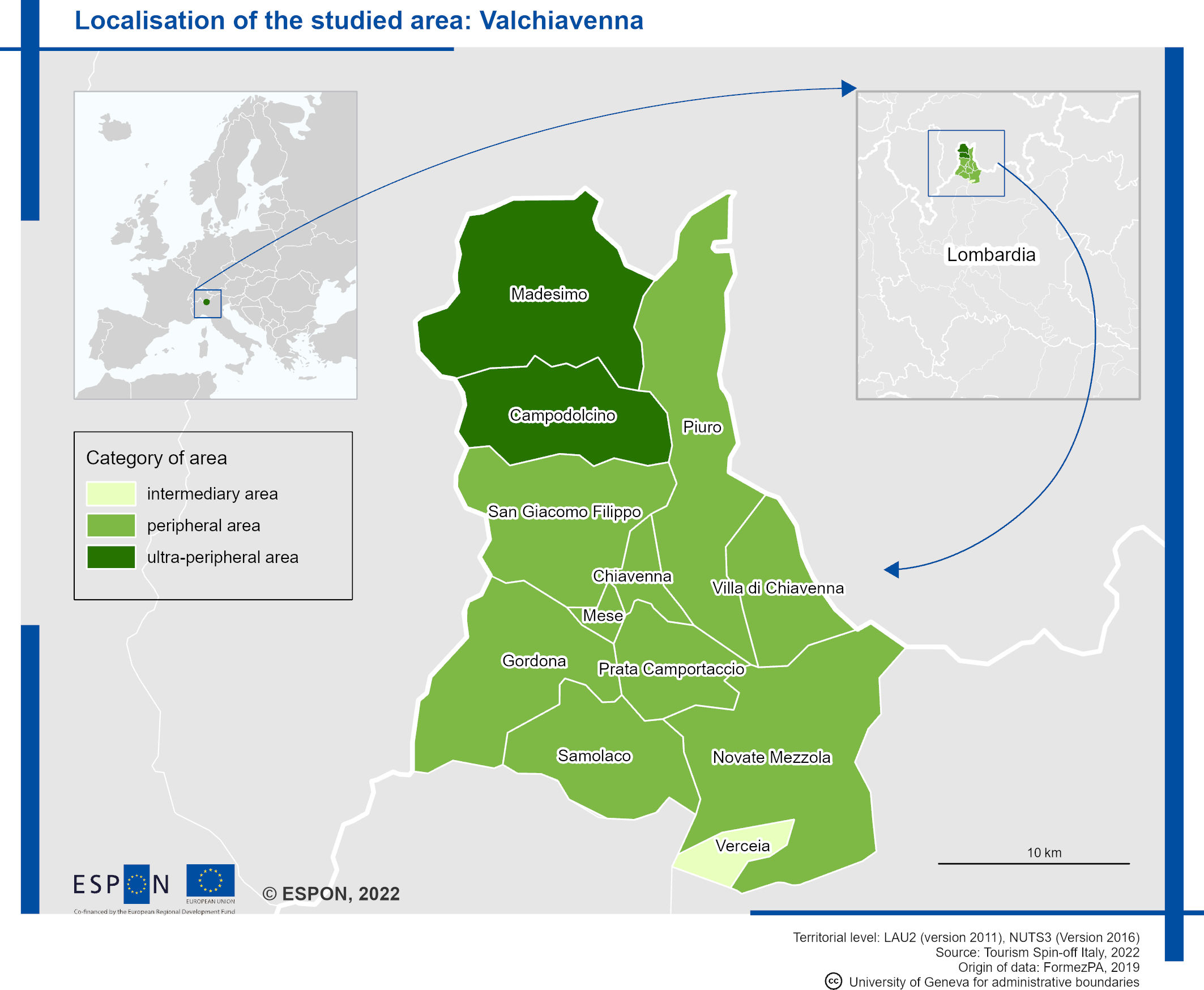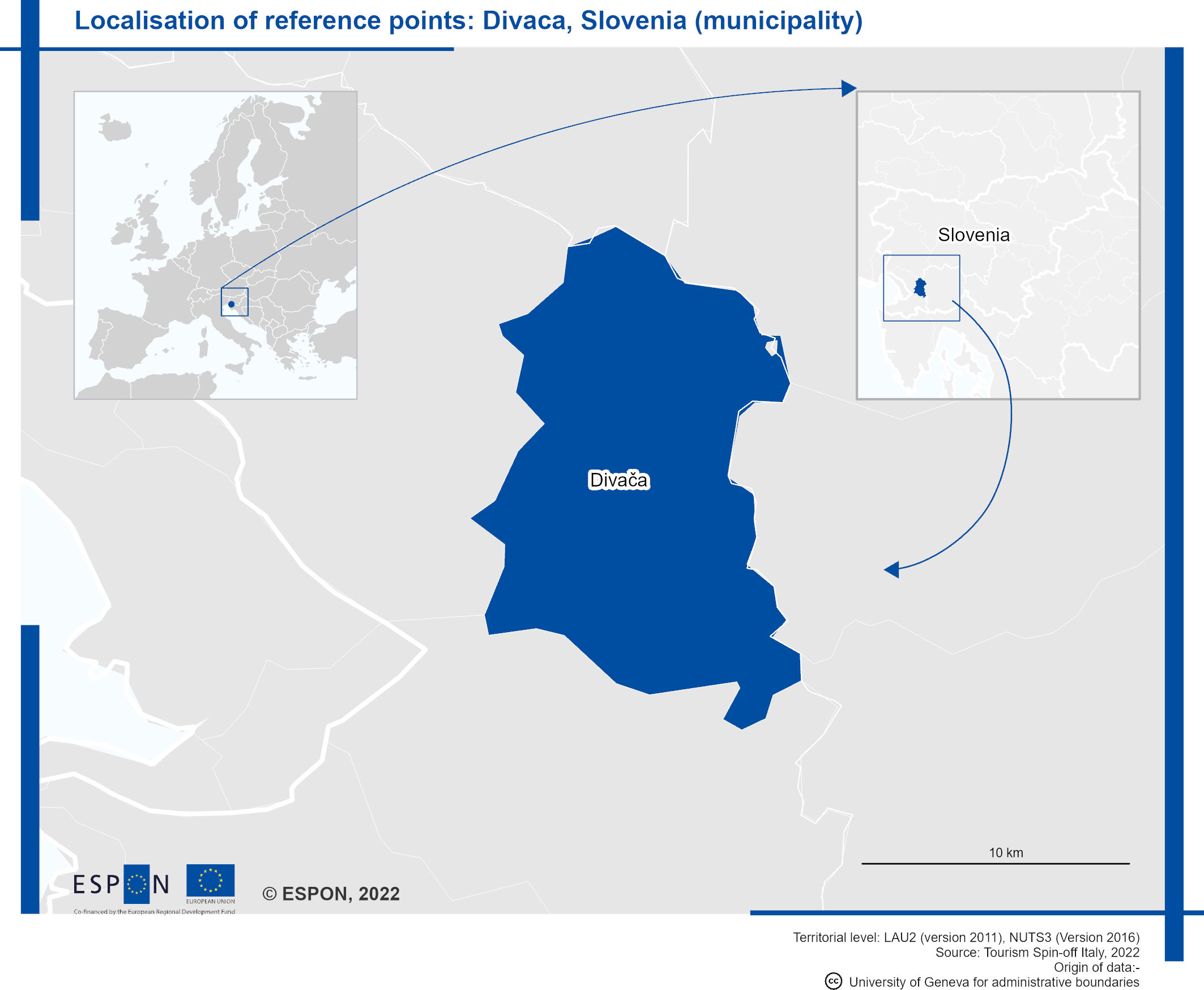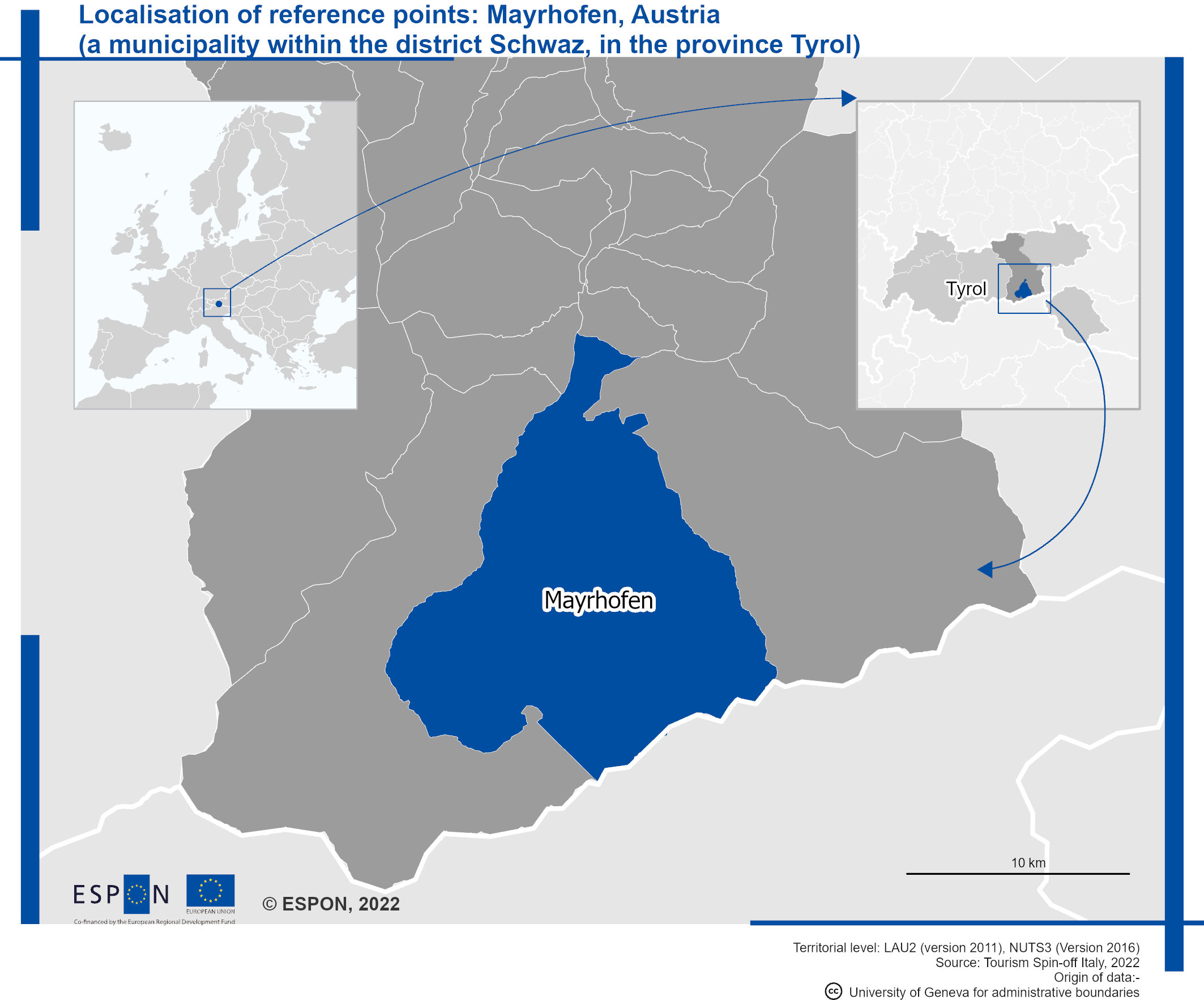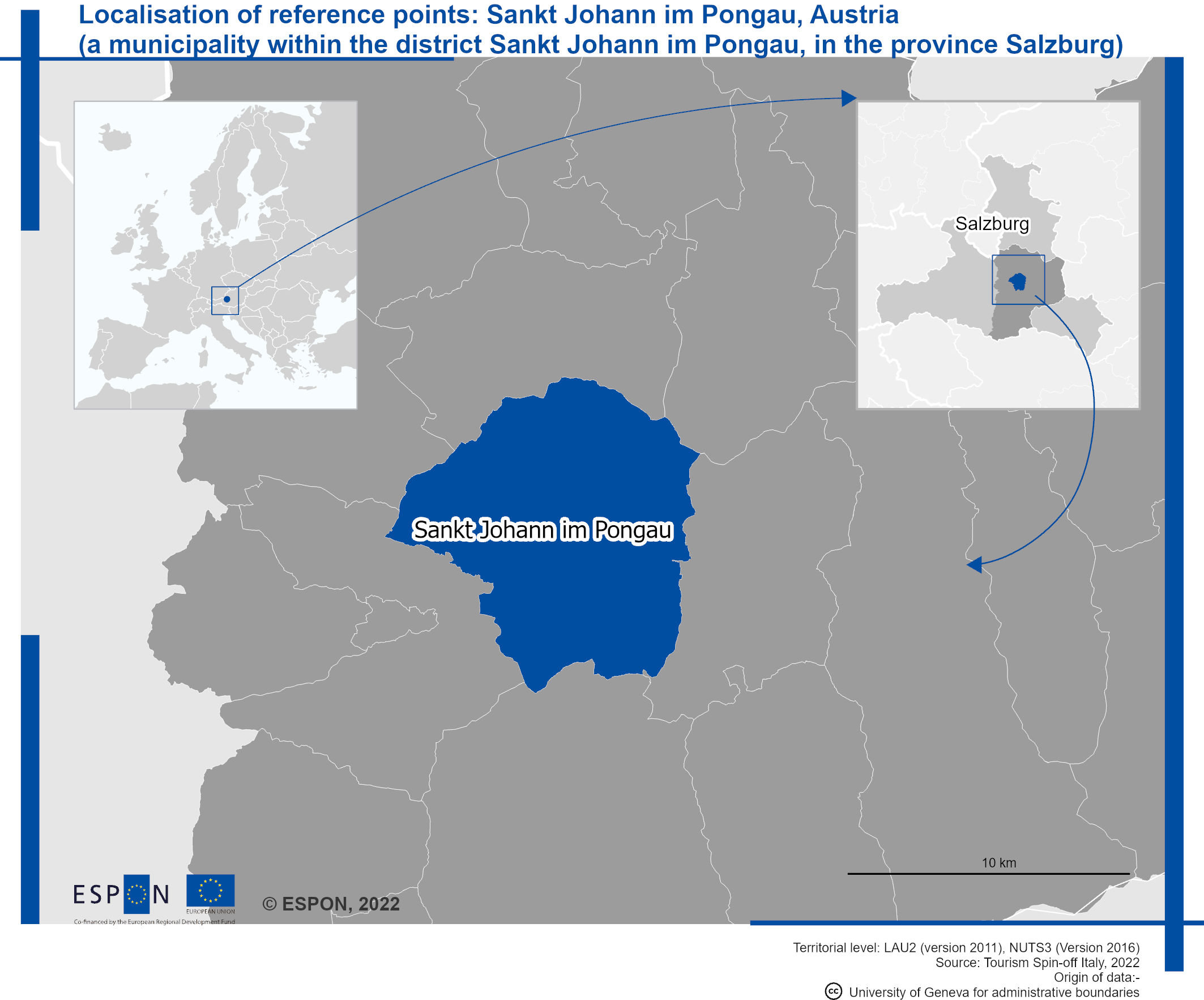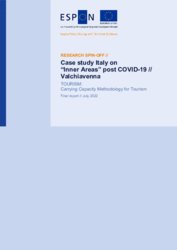Valchiavenna, Italy
According to Davide Trussoni, president of “Comunità Montana della Valchiavenna”, Valchiavenna is a territory that has always been crossed by people and goods coming from and moving towards different directions: central Europe to the north, the Po valley and the Mediterranean area to the south. “The glorious tourist tradition and the beauty of the landscape are not enough, above all because of the diffidence generated by the pandemic. The innate ability to attract and welcome people is in crisis”, he added.
ESPON, in cooperation with Regione Lombardia, responds to the needs of Valchiavenna with this case study. The objective is to provide an empirical foundation for the tourist destination of Valchiavenna in order to help local policymakers and stakeholders to identify their carrying capacity for tourism and to anticipate and face the challenges of future tourism development.
Inner Area Valchiavenna
Luisa Pedrazzini, director of the office European territorial and environmental cooperation in Regione Lombardia - DG Environment and Climate and ESPON Monitoring Committee Member Italy, commented “This is a great occasion not only for Italian territories but for many other regions in Europe, with similar geographic feature of the Valchiavenna, that is one of the areas laid out in the Italian Strategy for Inner Areas SNAI (Strategia nazionale per le aree interne) 2014-2020”.
The region of Valchiavenna is one of the inner areas laid out in the Italian Strategy for Inner Areas SNAI and is characterised by mountain tourism. Valchiavenna is situated in the north of Lombardy and borders the Swiss canton Graubünden/Grigioni on three sides.
The tourism sector is considered a vital part of Valchiavenna’s economy however it is insufficiently developed and has been heavily affected by COVID-19. Tourist flows are concentrated to certain times of the year. The peak is in August, the lowest number is generated in November. There are two seasons, namely a summer and a winter season offering jobs throughout the whole year.
The creation of the Inner Area Valchiavenna is expected to directly provide funds to economic operators from the area and therefore support the revitalisation of the handcrafts and touristic activities.
ESPON TOURISM: Case study “Inner Area Valchiavenna” post COVID-19
In order to measure the tourism impact and the carrying capacity, this research spin-off is relying on the methodological approach as developed in the ESPON Targeted Analysis “TOURISM: Carrying Capacity Methodology for Tourism”.
The Valchiavenna is benchmarked against all Italian provinces as well as two other alpine destinations in Austria (Mayrhofen and St. Johann im Pongau) and Slovenia (Divača). Based on the needs identification process with the stakeholders the main challenges have been identified in the course of the analysis along the main tourism characteristics (arrivals, overnights, tourism intensity, length of stay, tourism density).
The applied methodology is designed for a destination specific application and also applicable for other destination. It can be applied for any other inner area laid out in the SNAI but with its own set of stakeholders, documents, data and most important the commitment for an interactive process.
Stakeholders of Valchiavenna have identified several territorial needs
Need 1 fostering cooperation Due to inner-regional disparities and the uneven distribution of tourism attractions, Valchiavenna is lacking cooperation within the region. There is a need to foster cooperation not only locally but also among sectors and value-chains (e.g. tourism and agriculture, crafts and services).
Need 2 improving education There is a need for better education and qualification related to tourism and related services – high quality hospitality and sustainable tourism offers as well as language skills.
Need 3a enlarging the economic potential Economic potential has to be enlarged (also but not only related to tourism) in order to counteract brain-drain and depopulation. Entrepreneurial activities have to be encouraged and fostered.
Need 3b increasing attractiveness To increase the attractiveness of the region, the inner-regional infrastructure (mobility and SGEIs) will have to be improved.
Need 4a extending tourism seasonality Seasonality of tourism will have to be extended. The two main seasons of winter and summer will have to be more integrated and additional tourist segments to be attracted. This will call for other/sustainable tourism infrastructure.
Need 4b improving land use planning The concentration of tourism activities in certain areas within the region leads to unwanted hotspots of land-use conflicts and negative externalities of tourism/temporary dwellers. There is a need for careful land use planning and mix of land use types.
ESPON suggests some policy recommendations
Based on the analysis carried out, some answers and hints are provided, respectively for each question drafted in cooperation with the stakeholders.
1) Based on the SNAI (Strategia nazionale per le aree interne) action plan for the inner area “Valchiavenna”, which concrete actions could be implemented to take a path towards sustainable and resilient tourism in the region?
There is a clear need for more cross-sectoral cooperation and collaboration from and for inhabitants, private as well as public actors and tourists. Increased cooperation and communication between key local and regional actors is essential to establish sound, sustainable and resilient foundations for the development of the region and its tourism industry. As such, a sustainable and resilient tourism strategy for the region can only be developed hand in hand with a regional resilient development strategy. Beside its inclusiveness, the success of any strategy relies on its acceptance by local stakeholders, thus allowing the empowerment of these actors to implement concrete actions.
The analysis carried out also revealed that strengthening access to infrastructures and services of general interests for the local population is indispensable. Such investments will indeed simultaneously enhance services for tourism and help spread touristic activities. Likewise, fostering local, smart mobility, small scale health infrastructure, strengthening young people’s sense of belonging to the region to mitigate the brain-drain of the labour force are areas of intervention indirectly contributing to a more sustainable and resilient tourism in the region.
All in all, establishing a sustainable and resilient tourism industry shall not be a goal in itself. Rather, it is to be achieved by considering the wider social, economic and environmental ecosystem. The region’s tourism may only become more sustainable and resilient when supported by a diversified local economy, functioning infrastructure and services, and a stronger cooperation and communication between key actors moved by a common goal.
2) How to develop new approaches and how to spread the experiences to other similar situations? How to be innovative in order to develop a sustainable tourism and how to involve local stakeholders?
This exercise, which intended to broaden the local actors’ views on common challenges and needs, may be applied and replicated to any region. Nonetheless, a corner stone element of the approach applied shall still be undertaken by the involved parties, namely, the identification and specific tasks and attribution of responsibilities. Empowering local stakeholders to undertake the changes they want to see is a key pillar of this methodology.
The involvement of the widest array of stakeholders, from various sector, representing various interests, both in favour and possibly against the tourism industry is necessary to ensure the inclusiveness and sustainability of the process. Any participatory approaches must be continuous rather than occurring a specific point in time.
Luisa Pedrazzini invites other inner areas to follow the example of Valchiavenna: “According to the work done in collaboration with the Comunità Montana Valchiavenna and the local stakeholders, Italy can have an excellent opportunity to offer a chance to other Inner Areas and interact with ESPON. On the other side, the Valchiavenna local stakeholders had the opportunity to exchange with ESPON experts their needs and difficulties, during constructive discussions that led to useful policy recommendations. Local stakeholders have been supported in identifying a way to assess tourism trends in their area and find potential solutions to their needs to achieve a strategy for a sustainable development of tourism”.
3) Should the inner area “Valchiavenna” focus only on one type of tourism or should they enlarge the offer in order to attract more tourists?
Issues brought forward by stakeholders included the need to move away from the “traditional” winter/summer tourism seasons. This does not necessarily imply attracting more tourists, but rather enlarging the tourism offer as to attract visitors outside of the peak seasons. Enlarging the seasonality also goes hand in hand with the need to diversify the local economy.
4) Which are the obstacles that have to be overcome and how?
The region’s topography, following a valley divide, is an obstacle in itself. It hinders communication and collaboration of actors across the region. Also, it may contribute to reduce awareness of existing programmes or initiatives playing a key role in the region’s development (e.g. Local Action Groups). Public administrations, such as the Comunità Montana della Valchiavenna, may act as central catalyst for change and platform of exchange and dialogue, albeit providing that it can reach out to stakeholders all over the area.
Other obstacles include the lack of trained and skilled workers. Attracting and retaining a skilled labour force to the region has also been identified as a critical issue, particularly for the tourism industry (e.g. lack of foreign language skills).
5) How have touristic places survived and reacted to the COVID-19 impact and with the help of what economic means?
The impacts of the COVID-19 pandemic were particularly felt in the tourism sector. This analysis revealed the severe drop in visitor numbers resulting from travel bans and lockdowns enforced throughout Europe and beyond. The sector is now recovering, a situation which provides a chance to break away from path dependencies and “silo approaches” as well as traditional tourism management practices. Despite of the economic downturn in Valchiavenna, the region may still have benefited from the increasing interest for nature-based tourism.
6) In the context of policies on territorial resilience, are there any knowledge gaps preventing from delivering a more effective policy response? What is the character of those knowledge gaps? Do they result from difficulty in understanding the territorial development trends and challenges? Or, from lack of access to good practice on how similar places in Europe have dealt with those trends and challenges through the use of projects or policy instruments?
The region’s lack of statistical unity has been a challenge in the implementation of this analysis. A need for more regionally cohesive data set is identified. Furthermore, the region could benefit from the experience of other alpine regions in similar situations and which implemented solutions and programmes (e.g. the programme LEADER). The creation of a benchmark of already existing programmes and projects targeting similar issues than the ones faced by Valchiavenna could help kick-start the implementation of concrete actions. It seems important to keep in mind that not only specific tourism targeted projects can be of relevance but also projects improving the local services of general interest, services for the inhabitants which will indirectly benefit visiting tourists as well.
7) How to unlock the potential of places in decline, peripheries, places undergoing marginalization? How to make such geographies more connected and as places that matter?
The ESPON Tourism methodology applied in this project appears to be successful to enhance dialogue and grassroot communication with the actors of the regions. The continuation of the dialogue across sectors and territories to develop a common regional strategy has the potential of revealing regional capacities. However, and to obtain concrete results, the outcomes of this dialogue must be operationalised through the repartition of tasks and responsibilities. Unlocking the potential of marginalised regions requires a common, broadly shared vision attached to the place as well as empowered and coordinated local actors.
Further info
- ESPON TOURISM: Carrying Capacity Methodology for Tourism
- Contact the ESPON expert Piera Petruzzi
